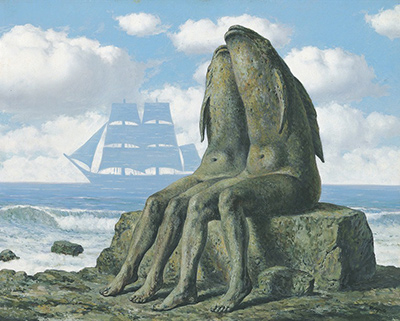René Magritte was a Belgian artist whose works fall under the genre of surrealism. He was quite popular during his lifetime and was known for portraying everyday ideas and objects in surprisingly different ways that got attention.
He was a big influence on pop art in the 20th century. Born in 1898 in Hainaut, Belgium, Magritte's started drawing lessons in 1910, and began painting from the age of 15.
Magritte worked with other painting techniques until 1926, when he created his first surrealist painting called, The Lost Jockey. Before this, he had dabbled with Impressionism, Cubism, and Futurism. The artist studied art at the Académie Royale des Beaux-Arts in Brussels with Constant Montald as this instructor.
The Wonders of Nature, originally known as Les Merveilles de la Nature is a painting by Magritte that is very typical of his work. Both poetic and unusual, it depicts a very whimsical scene. Two lovers with fish faces are sitting on a flat rock by the seaside. In the background, there is a calm sea on which a ship is sailing by. The size of the ship indicates that it is quite near the shore. The two fish-lovers appear to be singing. This painting is quaint with some humorous elements to it. In style, it appears to be influenced by the works of Salvador Dali.
What is striking about Les Merveilles de la Nature is that the concept of a mermaid with a human face and a tail and fins is completely reversed in this depiction. The two appear to be very much in love and despite being stone figures, have a sense of liveliness about them. Another striking element is the ship sailing behind the lovers. It appears to be some sort of ghost ship without actual humans aboard it.
The painting appears to be inspired by Les Chants de Maldoror, a nineteenth century French poem by Isidore Ducasse. The concept of the fish with human legs came from an illustration that Margitte created for this poem. The work was completed in 1953, and is now in the collection of the Collection Museum of Contemporary Art in Chicago.




